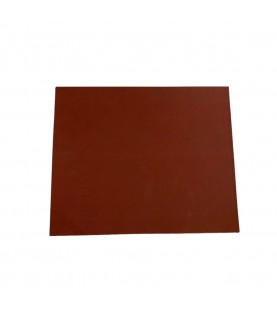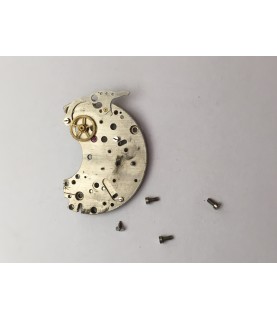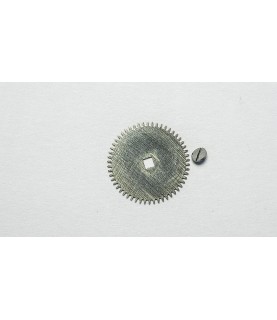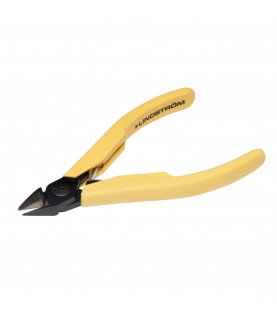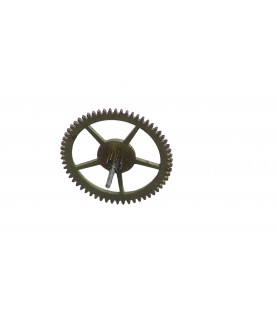Audemars Piguet: A New Historical Record

Audemars Piguet had already made its mark at the SIHH 2018 with its prototype RD#2 Royal Oak Selfwinding Perpetual Calendar Ultra-Thin in platinum, the slimmest selfwinding perpetual calendar on the market and a spectacular result achieved by five years of research and development.
Since last year, the prototype has been transformed into a production model, an archetype of exceptional know-how. With its in-house 2.89mm-thick caliber and 6.3mm-thick case, the Royal Oak Selfwinding Perpetual Calendar Ultra-Thin holds the world record for thinness. This record ultra-thinness is embedded in the DNA of the oldest manufacture still in the hands of the founding families.

As all watch enthusiasts are aware, the miniaturization of movement is synonymous with technical prowess when it is accompanied by the reliability inherent in high-end watches. Reducing the number of components and their size requires a mastery of performance and an innovative mindset that reflect the brand's philosophy, "to break the rules, you must first master them".

With their complexity that ranks them in the closed circle of Grandes Complications, perpetual calendar watches – and Royal Oak models as a whole – are generally not slim enough to slip smoothly under a shirt cuff, but that is now possible with this distillation of aesthetic and technical ingenuity. The watchmakers and engineers of the manufacture have integrated movement development, design and ergonomics into the conception of this new timepiece to boost its efficiency, robustness and reliability.

To achieve an ultra-thin movement measuring 2.89mm thick, the perpetual calendar functions, normally arranged on three levels have been merged into one single layer. This was achieved by optimizing the geometry of each component (256 in all) by means of two innovations, with the end of month cam being integrated into the date wheel and the month cam coupled with the month wheel.
Appearances are not deceptive!
The visible part of this intrinsic prowess focuses mainly on an ultra-thin profile, a clear view of the finely sculpted and decorated oscillating weight, the meticulously finished caliber, as well as the new dial layout. The day, date and month counters have been redesigned in a more generous size, as has the day/night indication at 8 o'clock, harmoniously arranged opposite the leap year at 4 o'clock.

Above all, the dial's traditional Grande Tapisserie motif has been replaced by a blue satin-finished surface enhancing legibility while reinforcing the modern character of the piece. Evolving from the initial 950 platinum prototype, the case combines titanium (case and bracelet) and 950 platinum (bezel and bracelet links). The two noble materials create subtle contrasts, further accentuated by the alternating satin-brushed and polished finishes created by the artisans of the Manufacture.
A Constantly Enriched Heritage
Audemars Piguet has long since proven its skills in crafting ultra-thin pocket watches and wristwatches, reaching new technical milestones at great speed and achieving major accomplishments at the start of the 20th century. One of these milestones included the 1921 pocket watch equipped with a movement that still holds the world record for slimness: 1.32mm! In 1938 the manufacture transposed this record into a wristwatch with a 1.64mm-thick caliber, then in 1967 with a 2.45mm-thick selfwinding movement.

But let us return to the perpetual calendar, the intricacies of which Audemars Piguet has long since mastered. Having become the first brand to display the leap year on a wristwatch in 1955 (Ref 5516), it also set a world slimness record for a perpetual calendar in 1978 with a 3.95mm-thick caliber, (Ref 5548).
Technological advances have always accompanied the evolution of the Audemars Piguet collections, whose watchmakers have benefited from the skills of engineers, designers and programmers. From the 1980s, the manufacture was one of the pioneers in using CAD (computer-aided design) or digital testing. The Royal Oak Selfwinding Perpetual Calendar Ultra-Thin provides a chance to evolve with time and to own the very best that modern timekeeping has to offer.
Watchmaking's yin and yang
The Royal Oak adorns infinite duration in white ceramic
The story on the previous page illustrates Audemars Piguet's love for horological complexity and technological challenges, as illustrated by the highly demanding field of perpetual calendars. The brand from Le Brassus was the first to incorporate the leap-year indication into such mechanisms more than half a century ago.

This expertise has been passed on to generations of watchmakers who have perfected the art of the perpetual calendar. These steadily honed skills have been expressed through miniaturization, overall technical content as well as decoration. The most precious precious and innovative materials have been tested and mastered by its teams engineers, to the delight of enthusiasts of high-end watches with a strong personality.

A major turning point in this lineage of interpretations was reached in 2017 with the Royal Oak Perpetual Calendar in black ceramic: yet another first in the history of Swiss watchmaking. As part of the Only Watch biennial auction in 2017, an exclusive one-of-a-kind version of this model was put up for the Only Watch Royal Oak Perpetual Calendar in black ceramic was auctioned by Christie's for CHF 800,000! Such a welcome from connoisseurs reflects the extent to which Audemars Piguet has entered a new dimension in recent years, joining the very closed circle of brands that, in order to obtain one of their iconic models, implies joining a waiting list.
Performance inside and out
In the wake of the Royal Oak Perpetual Calendar in black ceramic, Audemars Piguet is delighting its community of fans with a new version, this time in white ceramic. Above and beyond its incomparable visual effect, the use of ceramic offers – when fully mastered despite its notorious complexity – a number of benefits for the wearer: it is scratchproof and can withstand extreme temperatures and thermal shocks, while being both light and supple.

Multiple operations are required to obtain a uniform, compact and extremely hard material, which is then machined and finished by hand. In this case, Audemars Piguet specialists devoted more than 600 hours of research to developing this model. By way of comparison, a Royal Oak stainless steel bracelet requires six hours of work divided between machining, polishing, manual finishing, assembly and final inspection, while it takes five times more to perform exactly the same processes for the ceramic bracelet.
The transparent sapphire caseback provides a chance to admire some of the 374 components of the selfwinding in-house caliber, starting with the skillfully sculpted gold oscillating weight and the hand-finished bridges. Nonetheless, this mechanical treasure is a mere 4.31mm thick, resulting in a ceramic case measuring just 9.5mm thick.
Radiant Astronomical Moon
On the black ceramic version of this model, the astronomical moon seemed to almost merge with the black dial. By contrast, the white ceramic case and the brightness of the silver-toned counters illuminate the night star, portraying it with mesmerizing photographic realism that makes it seem closer than ever. The famous Royal Oak Grande Tapisserie motif oscillates between high-seas gray and Breton blue.

The Royal Oak white gold hands and hour-markers are decorated with a luminescent coating. The overall effect is one of rare intensity, a bright radiance that extends from the dial to its ceramic bracelet, secured by a titanium clasp.

Like any perpetual calendar, the Royal Oak Perpetual Calendar in white ceramic requires no adjustment until 2100. There are some rules one simply must not break. The Royal Oak perpetual calendar uses white ceramic to evoke the idea of infinite duration.

